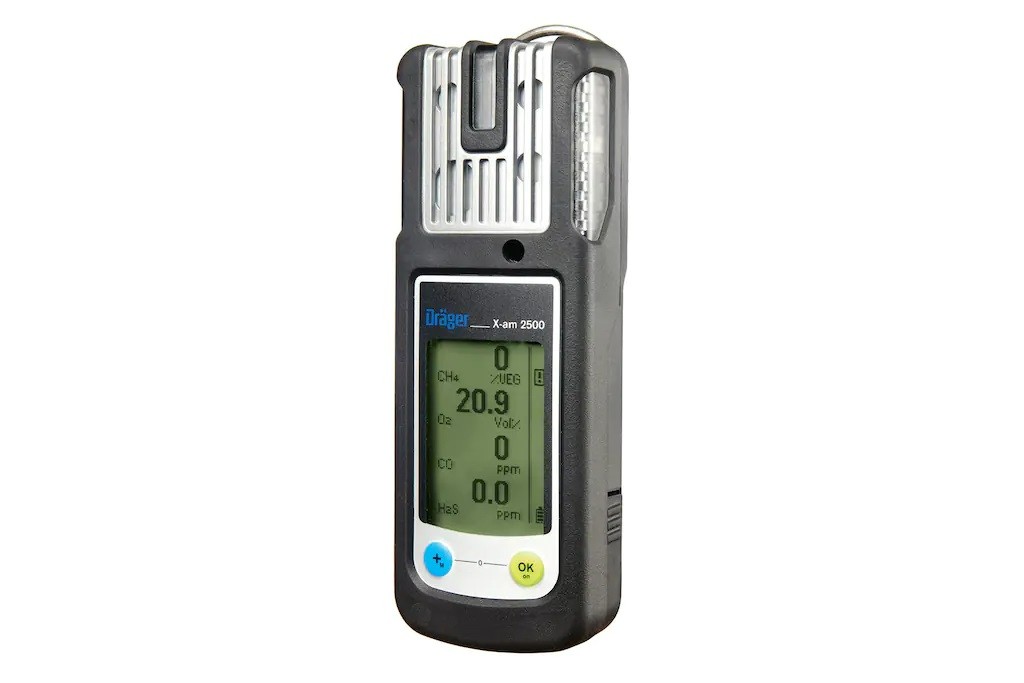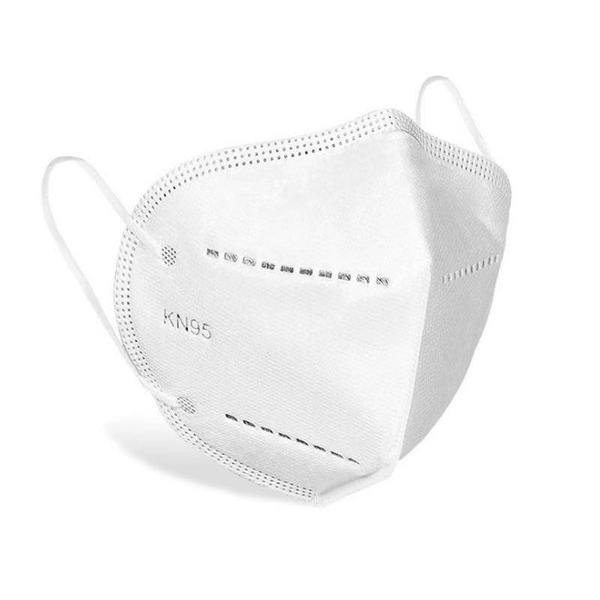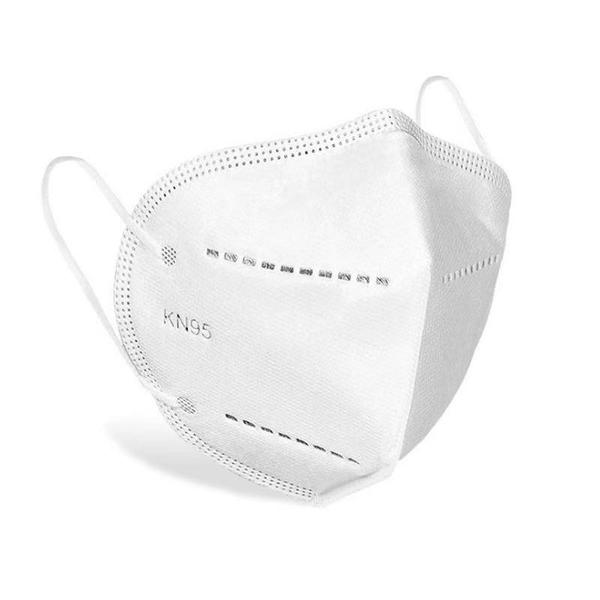
Get Reliable Results with a Dräger Multi-Gas Detector
Exposure to high levels of chemical vapors, gases, dusts, mists, and fumes are a significant threat to worker health and safety. Testing and continuously monitoring these hazards is an essential part of any good health and safety program and Hazmasters and Dräger can help implement these measures.
What is an Air Monitor?
There are so many different words used to describe an electronic device specifically designed to keep workers safe when air quality might be suspect. An “air monitor” could be called a “gas detector,” gas leak detector,” “multi-gas detector,” “sniffer,” “gas analyzer,” “confined space monitor,” “air meter,” “single gas monitor,” or any combination of these terms and more.
While these instruments might go by a variety of names, the ultimate goal is to keep workers safe around potential chemicals that are invisible to the naked eye. While indeed there are thousands of chemicals in our workplaces, there are only a few dozen sensors that are available to detect the most common hazardous gases and vapors that could be dangerous to workers.
Do You Need an Air Monitor?
Greater than 90% of all air monitors are purchased for use in confined spaces. Generally speaking, a confined space is a fully or partially enclosed space that:
What Are Some Common Confined Spaces?
Confined spaces can be below or above ground. Confined spaces can be found in almost any workplace. A confined space, despite its name, is not necessarily small.
Examples of confined spaces include silos, vats, hoppers, utility vaults, tanks, water supply towers, sewers, pipes, access shafts, truck or rail tank cars, aircraft wings, boilers, manholes, pump stations, digesters, manure pits and storage bins. Ditches, wells, and trenches may also be a confined space when access or egress is limited (but they still have “blue sky” above). Barges, shipping containers and fish holds are also considered as possible confined spaces.
Do I Need to Test the Air Quality of Every Confined Space?
Even if you have a confined space that you strongly doubt would contain “bad air”, you must always analyze those situations to ensure the air quality is safe. At a minimum, OSHA requires you to test permit-required confined spaces for 1) Oxygen (20.9% is normal) and; 2) flammable atmospheres (to ensure any spark would not ignite the breathing atmosphere where the workers are present). They then state you must check for any other known contaminants.
With that said, most multi-gas detectors will additionally test for both Carbon Monoxide and Hydrogen Sulfide, as these are common gases found in various work environments. Other sensors might exist for your work environment, so you need to investigate what is available. An employer has an obligation to ensure that the air quality is safe for workers, regardless of what sensors are available for these gas detectors.
If you cannot assure air quality is safe (no sensor available for a given chemical), then employees could be required to wear special respiratory protection to keep those employees from breathing any potential hazardous atmosphere. These hazard evaluations must be documented before any work continues in such environments.
Ultimately, analyzing and documenting all possible work activities (even those areas rarely worked in) will keep workers safe when the time comes to enter such areas. Take time to review your organization’s confined space procedures now and ensure proper training documentation is in place.
Check Out the Dräger X-am 2500 Multi-Gas Detector
Personal protection, area monitoring, confined space entry permits as well as safety measurements of shafts, channels or tanks are no problem with the new generation of Dräger X-am® devices. These portable gas detectors deliver reliable measurements, while durable sensors ensure maximum safety coupled with extremely low operating costs.
Dräger’s X-am 2500 can be configured to accurately detect oxygen, carbon monoxide, nitrogen dioxide, sulfur dioxide, hydrogen sulfide and combustible gases (LEL) like natural gas. It is the only multi-gas detector you need in industrial and refinery applications. The battery operated X-am 2500 combines reliable sensor technology with long battery life and intuitive operation in an instrument that defines safety. It is approved for most markets including mining, oil and gas, chemical, fire and hazardous response, government, and many other applications.
Matrix Display
The X-am 2500 multi-gas detector has a large, easy to read, liquid-crystal display. All gas readings are shown simultaneously and resize automatically depending on the number of sensors installed. When a gas alarm occurs, the reading for the sensor in the alarm will be highlighted.
High-Capacity Battery
The Dräger X-am 2500 multi-gas detector can operate for more than 12 hours with either alkaline batteries or with rechargeable NiMH batteries. Depending on the requirements, the batteries can be charged either in the workshop or in a vehicle.
X-dock Compatibility
The X-am 2500 multi-gas detector is compatible with Dräger’s X-dock® Testing and Calibration Station. X-dock is Dräger’s new solution for efficient maintenance and comprehensive equipment management. Used for functional testing and complete documentation, X-dock can complete bump tests in 8-15 seconds with more than 40% less gas consumption than competitive using several 500-550 mL/min of gas flow. The X-am 2500 multi-gas detector is also compatible with the Dräger Bump Test Station.
Long-Lasting, Reliable Sensor Technology
The innovative, catalytic Ex sensor has a high degree of drift stability with a high resistance to silicone and hydrogen sulfide. The sensor boasts an expected service life of more than five years and is extremely sensitive to flammable gas and vapors. Further, the X-am 2500 multi-gas detector is approved for measuring from methane to nonane, according to IEC/EN 60079-29-1.
Zone 0 Approved
The Dräger X-am 2500 multi-gas detector is Atex approved for Zone 0 for user safety in areas subject to explosion hazard.
Zone 0 is defined as: “A place in which an explosive atmosphere consisting of a mixture with air of dangerous substances in the form of gas, vapor or mist is present continuously or for long periods or frequently.”
Additionally, this multi-gas detector is not sensitive to electromagnetic radiation (such as, from wireless devices) and is water and dust resistant in accordance with protection class IP 67.
Diffusion or Pump
An optional External Pump with a hose up to 45 meters (147’) long is available for use in tanks and shafts or when searching for leaks. The switch from diffusion to pump operation can be handled quickly and easily without tools or screws.
Ergonomic and Robust
The Dräger X-am 2500 multi-gas detector is comfortably worn thanks to its low weight and ergonomic design. Gas can enter the unit from above and from the front – even if the instrument is inside a pocket or if the front gas entry is accidentally covered.
The practical two-button control panel and easy menu navigation allow for intuitive operation while the integrated protective rubber coating and sensors not sensitive to shock provide additional safety in case of impacts or vibrations.
Peak Value Functionality
The X-am 2500 multi-gas detector can store the highest gas readings for the Ex and toxic gas sensors and the lowest reading for the oxygen sensor. These readings can be easily reset after a gas exposure without having to turn the monitor off and on.
Hazmasters Has the Right Dräger Multi-Gas Detector for Your Application
Both multi-gas detectors below are configured to measure for oxygen, carbon monoxide, hydrogen sulfide, and combustibles (LEL). The X-am 2500 can serve as a carbon monoxide detector that also detects combustible gas. Other configurations are available upon request.
Order Dräger Products Today!
Hazmasters and Dräger are proud to partner together to bring you the most comprehensive selection of respiratory and gas detection products in the industry. You can order from our complete supply of Dräger products at Hazmasters.com.


| Call Us : Sales & Service: (877) 747-7117 Corporate: (800) 434-7065 |